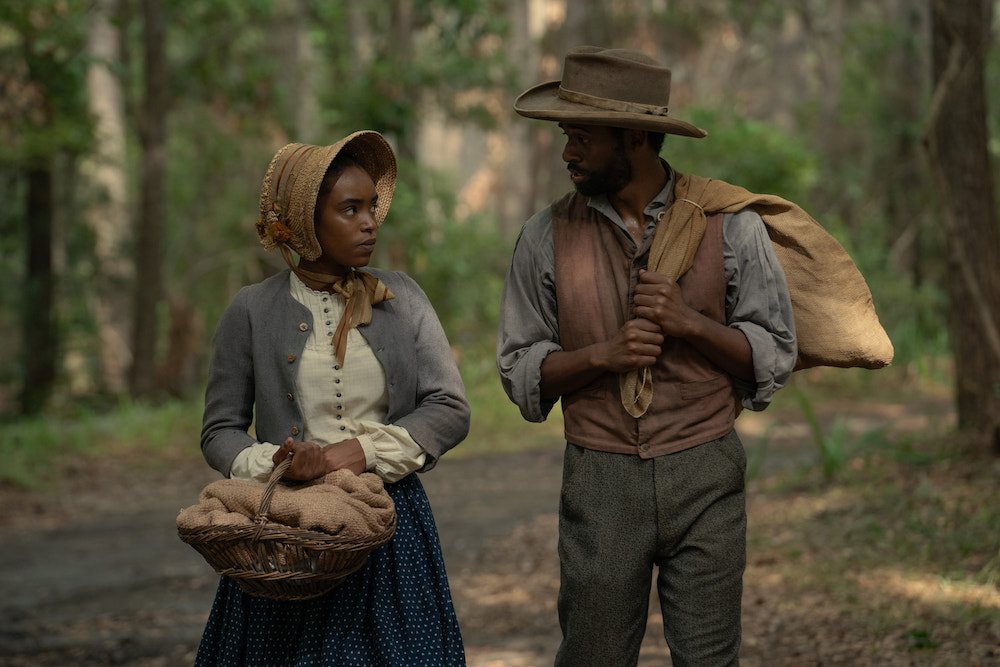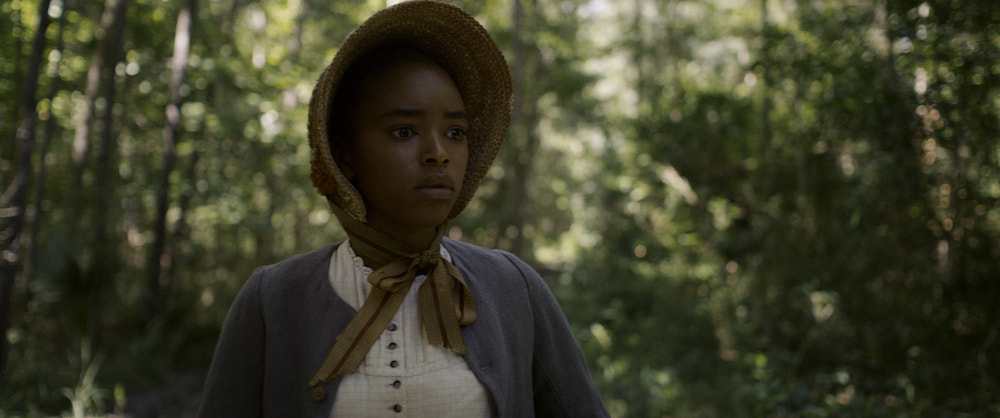In Apple TV+’s ‘Manhunt,’ Edwin Stanton and his team chase after John Wilkes Booth, who is in the wind after assassinating President Lincoln in the Ford’s Theatre. While the authorities look for the murderer, he hides in the homes of his co-conspirators, running from one location to another, trying to keep himself out of the hands of the law. The first stop in his journey is the house of Dr. Samuel Mudd, whom he turns to, especially after breaking his leg in the theatre after jumping from the balcony. At Mudd’s house, Booth crosses paths with Mary Simms, a young Black woman still enslaved by Dr. Mudd. How much truth is there in Mary’s story? SPOILERS AHEAD
Mary’s Part in Manhunt is Fictionalised to Serve the Plot
Mary Simms was a real African-American woman who lived in the household of Dr. Mudd. However, her arc, as shown in ‘Manhunt,’ is fictionalized, with the timeline tweaked by about a year to make the plot more dramatic. In the show, Mary is still at the Mudd House in 1865 when Booth arrives following Lincoln’s assassination. She not only sees him with her own eyes but also helps Dr. Mudd patch him up and later helps the authorities figure out Dr. Mudd’s role in Booth’s escape.
In reality, Mary Simms had left the Mudd household in 1864 and wasn’t there in the aftermath of Lincoln’s assassination. Still, she was one of the main witnesses to testify against Dr. Mudd when he was tried for conspiring with Booth and assisting him in fleeing after committing a grievous crime. Dr. Mudd tried to show that he was innocent and had done nothing but patch up Booth, claiming not to know about the assassination when he helped the young man and did his part as the good Samaritan. However, a case was built against him to show that the doctor had been heavily involved in the planning of the assassination, and it was proved through the testimonies of people like Mary.

Mary revealed that she had been enslaved by Dr. Mudd for about four years, during which time she was highly mistreated, being whipped repeatedly, even after slavery had been abolished in the country. She testified that during the summer of 1864, she had seen several men at Mudd’s house dressed in Confederate uniforms whom Mudd helped hide from Union soldiers. Mary was often asked to keep an eye out for any signs of danger. She also revealed that sometimes, Mudd would receive letters from the Confederacy, which proved beyond doubt that he had been in touch with the conspirators who eventually plotted and executed Lincoln’s assassination.
Mary’s brother, Elzee Eglent, was another witness in the case and testified to Dr. Mudd’s ill-treatment of the people he had enslaved. However, he had escaped the house in 1863 and couldn’t corroborate the events as told by his sister. Mary revealed that she left the Mudd house in November of 1864, soon after slavery was abolished in the state of Maryland. At the time, she was in her early 20s.
In ‘Manhunt,’ Mary Simms receives a different future, one that is more hopeful and gives the audience the satisfaction of her receiving a happy ending after enduring so much suffering and pain. In reality, things were a bit different for her. Reportedly, her name appears in the 1900 US census. At that time, her age was marked to be 60. She was married and had two kids, but her husband had died. She lived in Bryantown, Maryland, and worked as a cook for a family. The date of her passing away is not mentioned.
Because Mary played an important role in building the case against Dr. Mudd, who was eventually pardoned and went back to his house and lived a full life, ‘Manhunt’ gives her the space to become a bigger part of the story, making her an active player in the events instead of being pushed into the shadow and being a passive observer of events. With all this in mind, we can say that the Apple TV+ series brings its own twist to Mary Simms’ arc while keeping the core of her role rooted in the actual events that transpired at the time.
Read More: Apple TV’s Manhunt: All Filming Sites of the Historical Show


You must be logged in to post a comment.